Surface Finish Symbols In Drawing
Surface Finish and Surface Roughness
The finish on a metal surface after machining depends mainly on the material and some are as follows.
- It depends on the structure of the metal before and after machining,
- Depends on cutting conditions such as type and degree of sharpness of the cutting tool,
- Depth of cut,
- Amount of feed,
- Coolant used,
- Working conditions such as hot or cold,
- Vibrations and deflections of the tool or the workpiece while cutting, etc.
Symbols for Indicating Surface Finish
The quality of a surface finish on a metal surface produced by production method other than machining is shown on the drawing by a tick symbol as shown in fig-A. This basic symbol consists of two legs of unequal length. These are inclined at approximately 60 degrees to the line representing the surface to be machined with the vertex touching it.
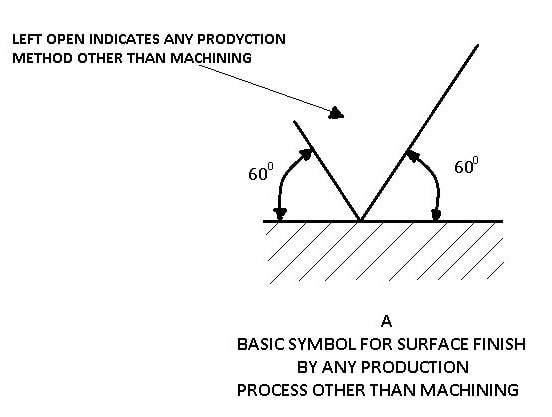
If the surface finish is to be obtained by removing the material by any machining process, a horizontal bar is to be added to the basic symbol. Converting it into an equilateral triangle as shown in Figure-B.
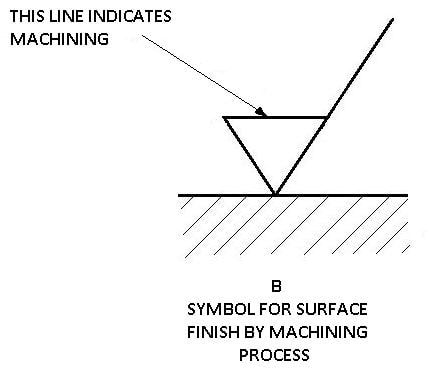
If the surface is to be produced without removal of material or when a surface is to be left in the very state resulting from the other manufacturing process, whether this state was achieved by the removal of the material or otherwise, a circle is written in the basic symbol as shown in fig-C.
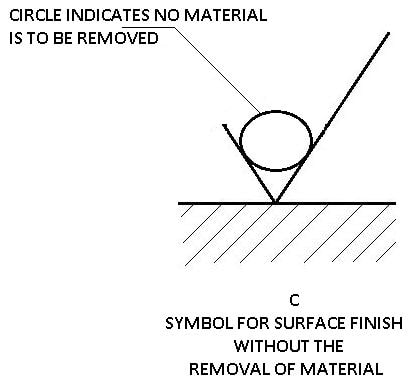
If the general manufacturing processes by themselves ensure achieving of the acceptable surface finish, then the specification of the surface finish is unnecessary, hence need not be indicated.
Indication of Surface Roughness Values
The surface roughness may be indicated in the basic symbol shown in the above figures by
- Roughness value in a micrometre
- Roughness grade numbers, or
- By triangle symbol
The indication of surface roughness values in the surface finish symbols are shown the figure A.
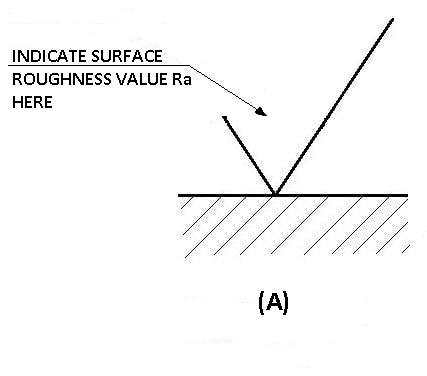
a) If the surface roughness is obtained by any production method other than machining, the value of surface rough necessary say,12.5μm is indicated in the basic symbol as shown in figure B.
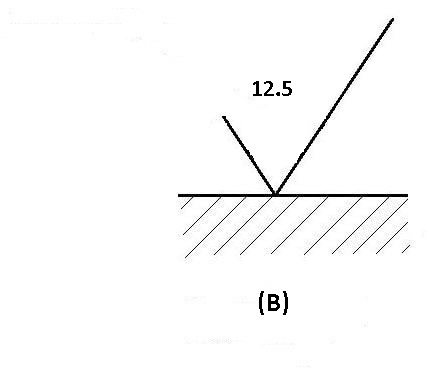
b) If the surface roughness is obtained by removing the material by machining, the value of surface roughness, say 12.5μm, should be indicated as shown in figure C.
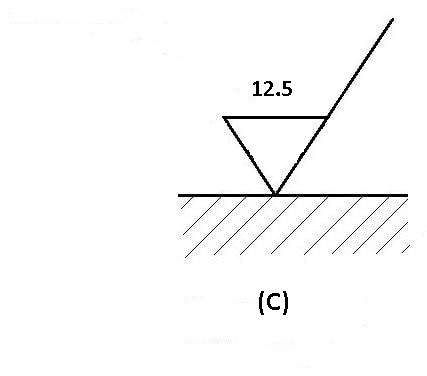
c) If the surface roughness is to be obtained without the removal of material or when it results from the previous production process, the value of surface roughness say 12.5μm, should be indicated as shown in figure D.
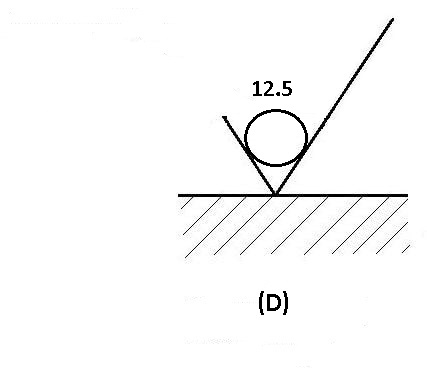
Indication of Surface Roughness Grades
The surface roughness is too shown by the grade number instead of their numerical values. The BIS has prescribed twelve grades of surface roughness. These grades of surface roughness. These grades of surface roughness are numbered as N1, N2, N3…..N12.
The standard prescribed grades of surface roughness may be chosen from the given Table-A corresponding to the required surface roughness values.
Table-A: Surface Roughness, Values, Grades and Symbols
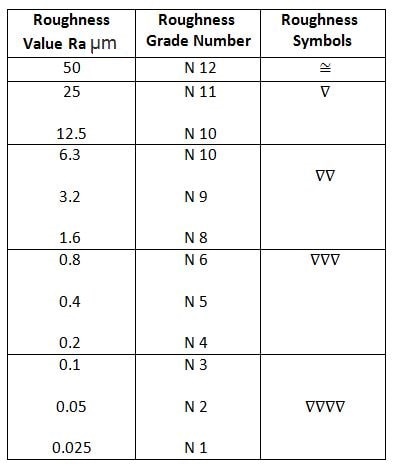
When the quality of surface finish is to be indicated by the roughness grade number in the surface finish symbol, the grade number is written in the same place of the roughness value the Figure-A.
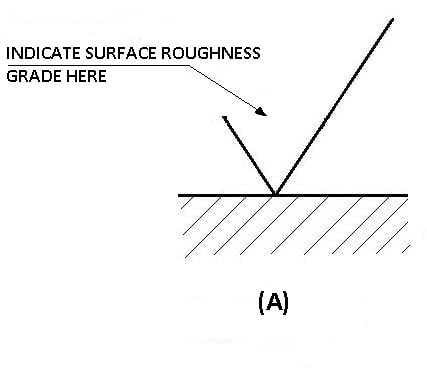
a) If the surface roughness is obtained by any production method other than machining, the grade number of surface roughness, for example, N10, is indicated in the basic symbol as shown in Figure-B.
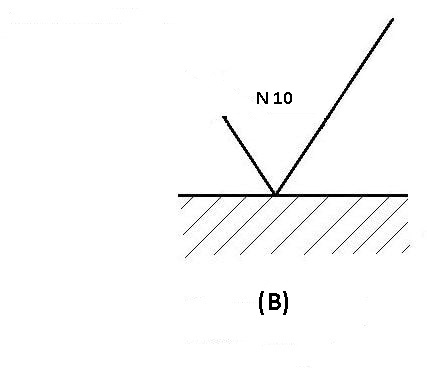
b) If the surface roughness is obtained by removing the material by machining the grade number of surface roughness, for example, N10 is indicated as shown in Figure-C.
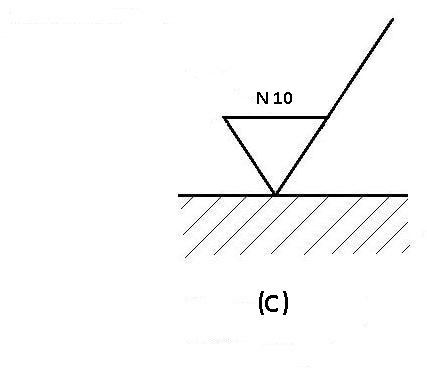
c) If the surface roughness is to be obtained without the removal of material or when it results from the previous production process, the value of the surface roughness, for example, N10 should be indicated as shown in Figure-D.

Indication of Surface Roughness by Triangle Symbol
The BIS (Bureau of Indian Standards) prefers the sign of surface roughness either by grades or by values, from the point of the requirements of overall engineering industries. It is suggested to indicate the surface roughness on drawing by symbols.
The BIS recommended symbols for indicating the surface finish are shown in Table A. For the roughness values greater than 25μm, the symbol is used. For roughness value less than 25μm, the equilateral triangular symbol is used.
Indication of Surface Roughness by Symbols

The number triangles indicate the range of surface roughness. As recommended in Table A, for roughness values ranging from 12μm to 25μm a single triangle is used.
- For roughness values ranging from 1.6 to 6.3μm, two triangles are used in series.
- For roughness values ranging from 0.025μm to 0.1μm, four triangles are used in series.
- The figure shows a typical example of indicating the surface finish by symbols.
Read Next:
- 10 Different Types of Lines Used In Engineering Drawing
- What is Isometric Projection? [Isometric View, Drawing and Representation]
That's it. Thanks for reading if you have any question about "Surface Finish & Surface Roughness" ask in the comments. Share this article if it's worth sharing.
Surface Finish Symbols In Drawing
Source: https://www.theengineerspost.com/surface-finish-surface-roughness-symbols/
Posted by: kussreearly.blogspot.com

0 Response to "Surface Finish Symbols In Drawing"
Post a Comment